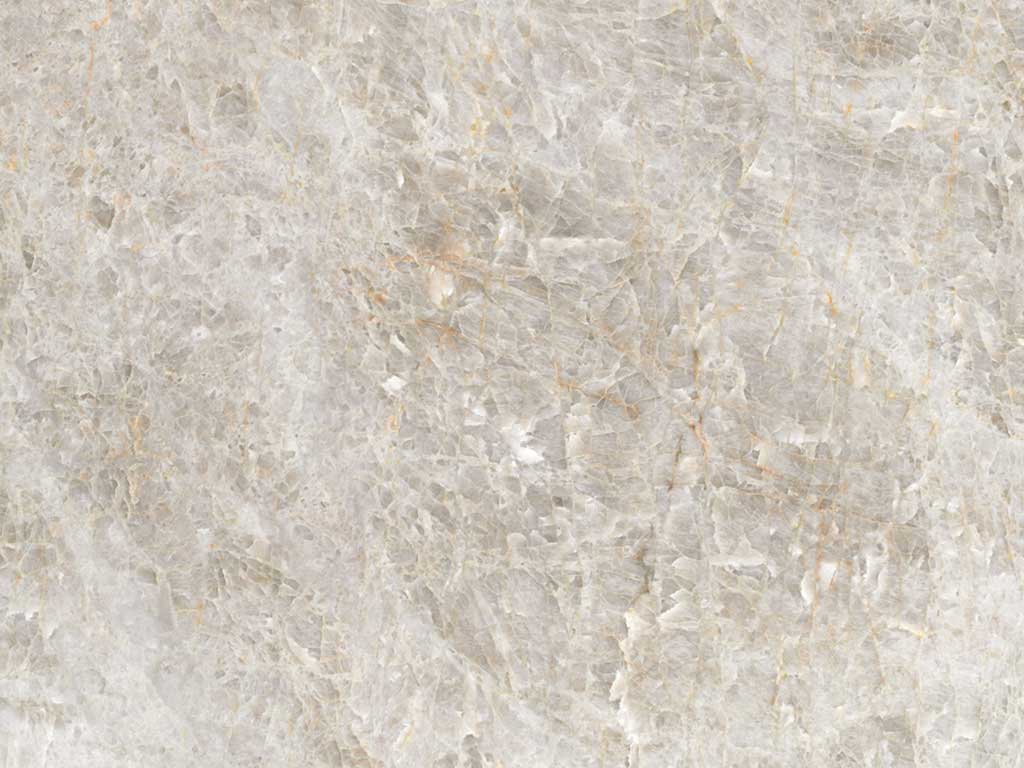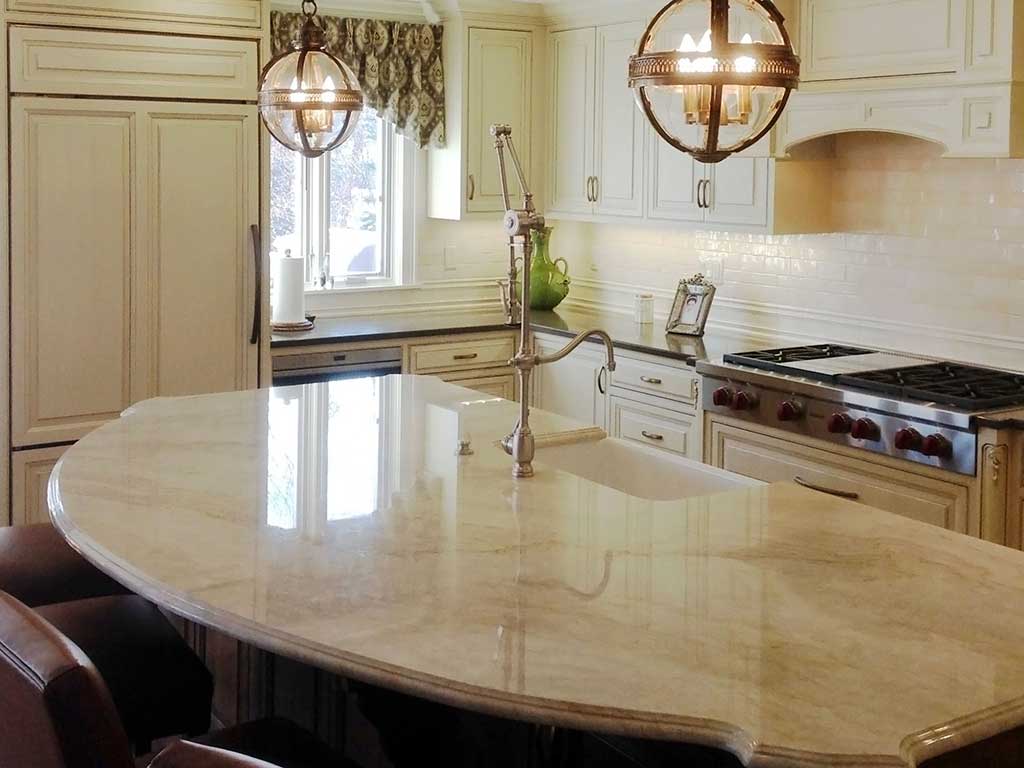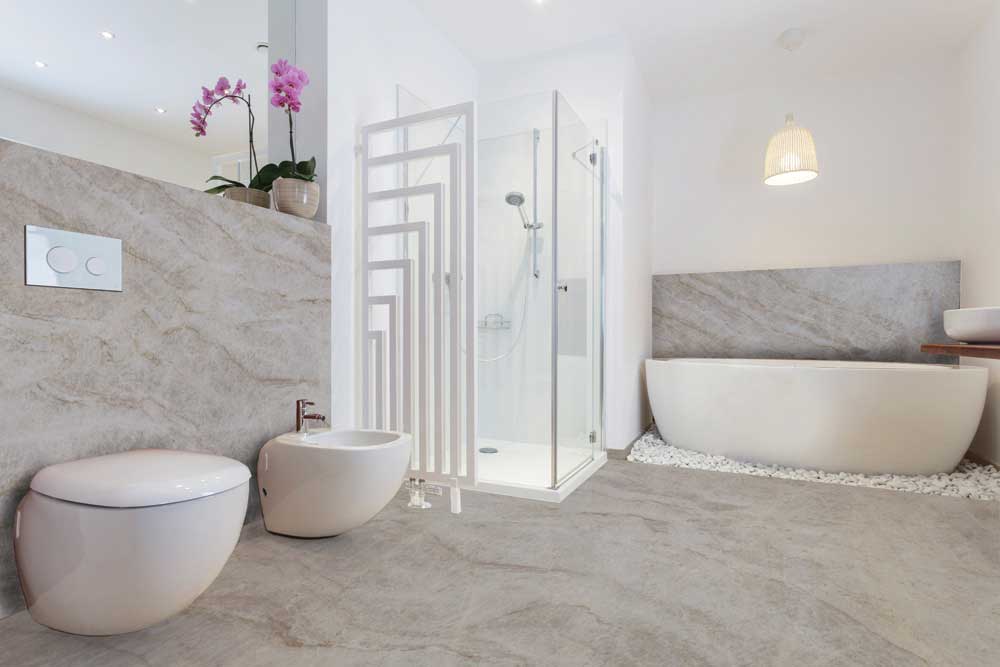Taj Mahal: the desired Quartzite
Taj Mahal is named after one of the most important monuments in India, which is a UNESCO World Heritage Site, but this fantastic material comes from Brazil and is one of those materials that cannot be easily classified.
Taj Mahal is an amber-coloured stone with a beige background colour, and it is slightly transparent. At first sight, this transparency combined with the brightness and undulating structure reminds us of marble or even of onyx. The surface is streaked by wavy and dark veins, whose colours are mostly varying between amber and grey with almost metallic shades.
If you analyse the technical characteristics of this material, such as hardness and biomechanical resistance, you will recognise that this material, from a technical point of view, differs very much from marble and it is often classified as granite on sale.
Application of the quartzite Taj Mahal
In fact, Taj Mahal is neither marble nor granite; it is a white quartzite from Brazil and due to its sophisticated elegance and resistance to scratches and to chemicals (even to potent acids), it suits best for interior fittings. Architects and interior designer often use this material to realise kitchen tops, tabletops, vanity tops, floor or wall covering and interior pavement.
The versatility of this quartzite makes it a great choice for indoor as well as for outdoor use, as it combines timeless beauty and unique resistance.
In interior design, the white quartzite Taj Mahal is used to design spaces in various sophisticated ways. When installing a floor with this quartzite, it will don the space a distinctive elegance, at the same time the floor surface will withstand daily use without losing its beauty. In addition, this quartzite is perfect as a vanity top in your bathroom or as a countertop in your kitchen, because the surface is shock-resistant and easy to clean.
Wall cladding of Taj Mahal is ideal if you want to add atmosphere and style to your premises: the unique veins and light tones go wonderfully with any type of furniture, from ultra-modern to classic.
Outdoors, the quartzite Taj Mahal suits as floor covering on terraces and in courtyards, as it dons a touch of elegance while withstanding bad weather and atmospheric conditions. Stairs made of quartzite become architectural elements that add splendour to any outdoor design.
Characteristics and surface finishing of quartzite Taj Mahal
A special feature of the white quartzite Taj Mahal is the easy care. The surface is not porous and therefore quick and easy to clean.
One of its best qualities is the fact, that this quartzite doesn’t absorb stains: therefore, Taj Mahal is a perfect material to create elegant spaces which are difficult to be cleaned and kept in order.
Polished and satined surfaces are much sought-after because they emphasize the colour and design of the material, providing a cosy and elegant room atmosphere.
Of course, these details are only guidelines, let your imagination run wild to exalt the beauty of this Brazilian quartzite, that has the power to create spaces with a relaxing and calm atmosphere, full of positive vibes.



